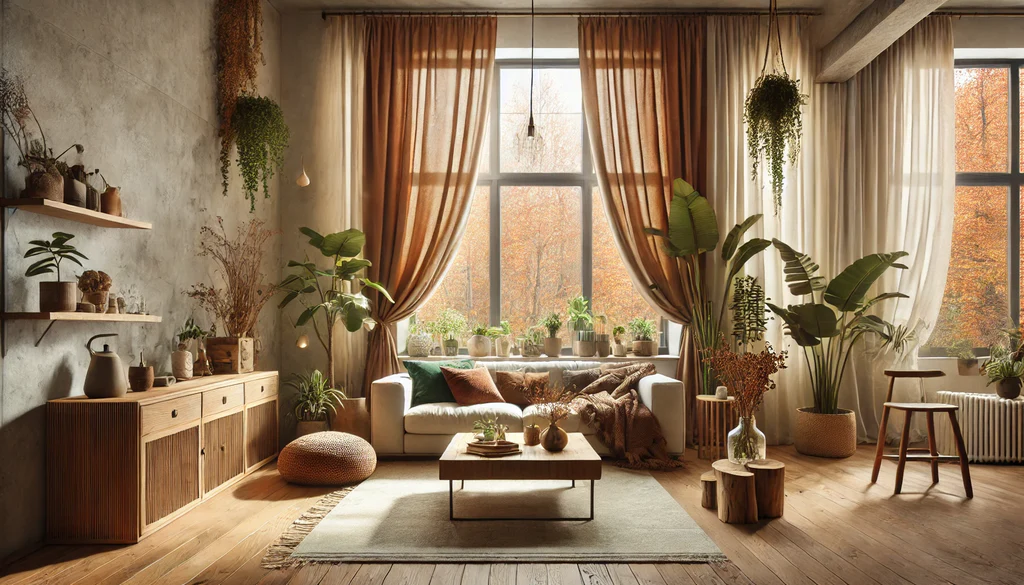
The Hidden Ecology of Home: How Curtains Singapore Influence Our Indoor Environments
Curtains Singapore options reveal a fascinating interplay between function and aesthetic sensibility, much like the complex relationships found in natural ecosystems. Within the bustling urban landscape of this island nation, these textile boundaries serve as more than mere window coverings—they represent a conscious adaptation to the unique environmental conditions of equatorial living. The careful selection of curtains in Singapore demonstrates how humans unconsciously mirror natural selection processes, choosing materials and designs that best suit our survival and comfort in the constructed habitats we create.
The Symbiotic Relationship Between Climate and Fabric
The relationship between Singapore’s climate and the fabrics chosen for window treatments exemplifies what I would call ‘domestic environmental adaptation.’ With year-round humidity hovering above 80% and temperatures consistently between 25-31°C, the selection pressure favours certain materials over others. This reminds me of how organisms in a rainforest have evolved specific traits to manage similar conditions.
- Lightweight sheers that allow air circulation while diffusing harsh sunlight
- Moisture-resistant synthetic blends that resist mould growth in humid conditions
- UV-protective fabrics that shield furnishings from equatorial sun damage
- Antimicrobial treatments that prevent bacterial growth common in tropical settings
“Singapore’s unique position near the equator creates specific requirements for curtains that balance light control with ventilation needs, making fabric selection an exercise in environmental adaptation rather than purely decorative choice,” notes a prominent Singapore curtains specialist.
The Behavioural Ecology of Light Management
What fascinates me most is how the management of light through curtains mirrors behaviours seen throughout the animal kingdom. Just as creatures seek shade during intense midday sun or emerge during gentler morning light, Singapore residents manipulate their window coverings to create optimal indoor conditions throughout the day.
Day/night cycles near the equator maintain remarkable consistency year-round, with approximately 12 hours of each. This stability contrasts sharply with temperate regions where seasonal variations dramatically alter light patterns. In response, curtains Singapore specialists often recommend layered solutions:
- Morning hours: Sheer curtains that welcome indirect light while maintaining privacy
- Midday: Heavier drapes drawn to block intense heat and glare
- Evening: Strategic opening to capture cooling breezes
- Night: Full closure for security and darkness conducive to sleep patterns
Urban Adaptation and Protective Coloration
The predominance of high-rise living in Singapore creates another fascinating parallel to natural systems. Much as creatures living in exposed environments develop protective coloration, Singapore’s curtains often serve as the first line of defence against the intense scrutiny that comes with dense urban proximity.
“In Singapore’s high-density living environments, curtains perform the dual function of light control and privacy maintenance—an essential boundary layer between internal and external worlds,” explains an experienced curtains Singapore designer.
This protective function takes on additional dimensions when we consider Singapore’s position as one of the world’s most densely populated urban centres. The vertical distribution of humanity creates unprecedented proximity, making these textile shields essential adaptations for psychological wellbeing.
The Evolutionary History of Window Treatments
The curtains Singapore residents choose today represent the culmination of centuries of textile development, trading histories, and cultural exchange. The island’s position as a historical crossroads of Eastern and Western influence is reflected in the diversity of available styles:
- Traditional batik patterns connecting to regional heritage
- Contemporary minimalist designs reflecting modern architectural trends
- European-inspired damasks and jacquards from colonial influence
- Japanese and Korean inspired treatments gaining popularity through cultural exchange
This diversity represents what biologists would recognize as adaptive radiation—the development of many specialized forms from a common ancestor. Each style represents an adaptation to particular needs, preferences, and cultural contexts.
Sustainable Choices in the Anthropocene
As our planet faces unprecedented environmental challenges, the curtains Singapore households select increasingly reflect growing ecological awareness. The shift toward sustainable materials mirrors the urgent adaptations occurring throughout natural systems under pressure.
- Bamboo-derived fabrics offering renewable alternatives
- Recycled polyester reducing petroleum dependence
- Low-chemical dye processes protecting water systems
- Energy-efficient thermal curtains reducing cooling requirements
“The growing preference for eco-friendly curtain options in Singapore represents a small but significant shift in consumer consciousness—recognizing that even these seemingly minor household choices have cumulative environmental impact,” notes a sustainable design expert working with curtains Singapore manufacturers.
Conclusion: The Microhabitat Within
The study of how we shape our immediate environments reveals profound truths about human nature. Our homes represent our most immediate ecosystem—the microhabitat we construct to shelter ourselves from external pressures whilst creating spaces conducive to our thriving. In this context, the selection of appropriate window treatments becomes not merely decorative but fundamentally adaptive.
The careful consideration given to factors like light management, privacy, temperature control, and aesthetics demonstrates the sophisticated environmental awareness that has allowed humans to colonize nearly every habitat on Earth. From the gleaming skyscrapers of Marina Bay to the heritage shophouses of Katong, the thoughtful selection of curtains Singapore residents make reveals our species’ remarkable capacity for environmental modification and adaptation.





